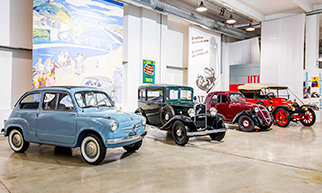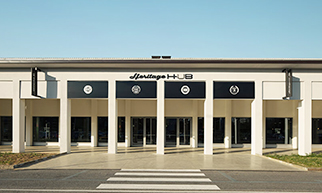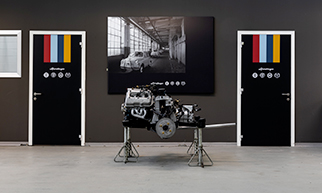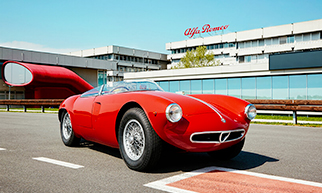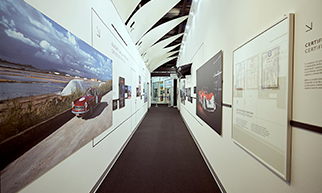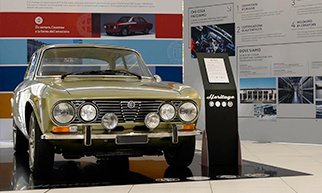Forty years ago, FIAT introduced one of the most surprising and unconventional cars to ever come off the Mirafiori assembly line: the Uno Turbo i.e.
This was the era of little “pocket rockets”, a time when young people and motorheads were clamoring for vehicles which could pack sports-car-like performance into a hatchback body. FIAT’s response to a trend which had already been set in France and Germany, the Uno Turbo i.e. made a stylish entrance into an elite club dominated by esteemed competitors with its unique blend of advanced technology, exhilarating performance, and distinctive style.
Roberto Giolito, Head of Stellantis Heritage, stated: “The Uno Turbo i.e. was much more than a small sports car. It was a dream within reach and a symbol of freedom for an entire generation whose heart beat to the rhythm of the turbo. It had determination, character, and an unmistakable sound which could turn heads. It was a car which spoke to young people, but did so with a mature language comprised of technology and innovation. To this day, forty years on, it is fondly recalled by those who drove it. Some cars never grow old, but become symbols of an era or a generation which still believes in dreams.”
Officially introduced in the spring of 1985, when the two-year-old Uno had already sold more than 1 million units, the Turbo i.e. was the product of a simple yet effective recipe: a 1301-cc engine featuring Bosch electronic fuel injection, Magneti Marelli electronic ignition, and an IHI VL2 water-cooled turbocharger with an air/air intercooler. This led to 105 hp, an impressive 147 Nm of torque at 3,200 RPM, a top speed of 200 km/h, and acceleration from 0 to 100 km/h in 8.3 seconds—all within a body which weighed in at just 845 kg. To complete its sporty makeup, the chassis featured an anti-roll bar and a braking system with front ventilated discs. Its five-speed gearbox was derived from the Ritmo 105 TC. The analogue Veglia-Borletti or—by request—Nippon-Seiki completely digital dashboard was a feast for the eyes: a speedometer, rev counter, and gauges for pressure, oil temperature, water temperature, fuel, and, of course, turbo. Notably, it included the innovative “check panel”, a display which monitored the door, lights, cooling, and lubrification status—a brand-new feature in the compact segment.
The body featured a revised front bumper with integrated foglamps and inlets to direct air to the intercooler and oil, miniskirts and wheel arches taken from the Uno SX, and a fiberglass tailgate with a spoiler. The 13" diamond-cut alloy wheels were fitted with 175/60 low-profile tires and hubcaps with the Abarth scorpion on a red background. The interiors were a showcase of sporty elegance: black velvet decorated with the five red bars of the Fiat logo, red carpeting, black seatbelts, a four-spoke steering wheel, and a red liquid-crystal clock. And to cap it all off, it delivered a deep sound thanks to its oval chrome-exhaust tip. In 1985, even Michele Alboreto, Ferrari’s official Formula 1 driver at the time, wanted in on the Uno Turbo action. A special session organized for him by FIAT on the Jacarepaguá circuit in Brazil made headlines around the world. At the end of the test, the Italian champion didn’t hide his surprise: “It is fun, responsive, and the turbo gets your heart racing. With a bit more horsepower, it would be perfect for the track.” Plaudits from the driver of the most famous open-wheel car on the planet went a long way towards solidifying the Uno Turbo’s reputation.
In 1986, the first update introduced new colors, a new grille, matching side mirrors, “Turbo i.e.” stripes along the sides, and the debut of the more visible green digital dashboard.
The 1987 restyling—model year 1988—introduced the revolutionary (yet problematic) “Antiskid” system designed by AP Lockheed which acted only on the front wheels. Three years later, the more mature and modern second series made its debut. The engine featured an improved capacity of 1,372 cc, a new Garett T2 turbine, an increase to 116 hp, and acceleration from 0 to 100 in 7.7 seconds. Meanwhile, it came with a more understated look: bumpers featuring a red strip, an integrated spoiler, new four-spoke alloy wheels, more ergonomic interiors, seats with black and gray squares, and a leather Momo steering wheel. There was also a 112-hp, catalyzed-converter version produced to adhere to the Euro 1 regulation, as well as the extremely sporty Racing version which sported matching details, a cursive logo, and a load of optionals: a sunroof, remote-control locking, headlamp washers, electric windows, and metallic paint.
Interestingly, in both series, some Uno Turbo i.e. were turned into one-of-a-kind pieces by custom coachbuilders who acquired stripped-down bodies directly from FIAT. Each car was then refinished by request with custom colors, details, wheels, and fine materials such as leather or Alcantara. Furthermore, they were given features, like air conditioning, which could only be found on cars in higher segments. These special trims were designed by historic coachbuilders such as Scioneri, Giannini, Moretti, and Hormann, whose names could often be in the car’s registration papers. In 1986, Moretti introduced the Uno Turbo MX which stood out with its one solid color, alloy wheels with low-profile tires, Alcantara interiors, and its briar-wood dashboard with and digital instrument panel.
The Uno Turbo i.e. was produced until 1994 (with some registrations taking place in 1995 as well), passing the baton onto the Punto GT. In its time, it won over more than 50,000 drivers, impressing for both its commercial success and its ability to capture the imagination of an entire generation. To this day, the roar of a well-preserved Uno Turbo is still able to turn just about anyone’s head, whether they are familiar with it or not.
After all, the success of the Uno Turbo went far beyond its technical specifications. It became a symbol for an entire generation which “andava al massimo e voleva una vita spericolata”, as Vasco Rossi famously sang. Over the years, its rebellious and indomitable spirit has made it one of the most sought-after youngtimers. Few have survived, especially in their original configuration, with prices reaching €20,000—not bad for a car which cost 14,450,000 lire in 1985. However, money aside, its legacy lives on. With the Uno Turbo, Fiat took a chance and brought turbo to the hearts of its vehicles and customers, giving birth to an icon of freedom and enjoyment which still roars after all these years.
